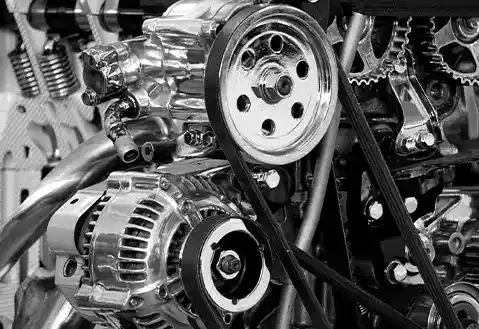- Arabic
- French
- Russian
- Spanish
- Portuguese
- Turkish
- Armenian
- English
- Albanian
- Amharic
- Azerbaijani
- Basque
- Belarusian
- Bengali
- Bosnian
- Bulgarian
- Catalan
- Cebuano
- Corsican
- Croatian
- Czech
- Danish
- Dutch
- Afrikaans
- Esperanto
- Estonian
- Finnish
- Frisian
- Galician
- Georgian
- German
- Greek
- Gujarati
- Haitian Creole
- hausa
- hawaiian
- Hebrew
- Hindi
- Miao
- Hungarian
- Icelandic
- igbo
- Indonesian
- irish
- Italian
- Japanese
- Javanese
- Kannada
- kazakh
- Khmer
- Rwandese
- Korean
- Kurdish
- Kyrgyz
- Lao
- Latin
- Latvian
- Lithuanian
- Luxembourgish
- Macedonian
- Malgashi
- Malay
- Malayalam
- Maltese
- Maori
- Marathi
- Mongolian
- Myanmar
- Nepali
- Norwegian
- Norwegian
- Occitan
- Pashto
- Persian
- Polish
- Punjabi
- Romanian
- Samoan
- Scottish Gaelic
- Serbian
- Sesotho
- Shona
- Sindhi
- Sinhala
- Slovak
- Slovenian
- Somali
- Sundanese
- Swahili
- Swedish
- Tagalog
- Tajik
- Tamil
- Tatar
- Telugu
- Thai
- Turkmen
- Ukrainian
- Urdu
- Uighur
- Uzbek
- Vietnamese
- Welsh
- Bantu
- Yiddish
- Yoruba
- Zulu
نومبر . 30, 2024 09:00 Back to list
Understanding the Importance of V-Belt in Mechanical Systems and Applications
Understanding V-Belts A Comprehensive Overview
V-belts, short for variable belts, are an integral component in various mechanical systems, primarily for power transmission. These belts have been widely adopted in numerous applications, ranging from automotive engines to industrial machinery. Their design, functionality, and applications make them a vital part of modern engineering.
The Structure of V-Belts
A V-belt is characterized by its trapezoidal cross-section, which enables it to fit snugly into corresponding grooves of pulleys. This design enhances friction and, consequently, the transmission of power. The 'V' shape allows for better alignment and minimizes slippage compared to flat belts. The materials used in the construction of V-belts typically include rubber composites, which provide flexibility and durability. Additionally, many modern V-belts are reinforced with synthetic fibers to withstand high tensile loads.
Types of V-Belts
There are various types of V-belts, each tailored for specific applications. The most common types include
1. Classical V-Belts These are the most prevalent type used in light industrial applications. They come in various sizes and lengths, catering to different requirements.
2. Narrow V-Belts With a narrower design, these belts are used when space is limited but high power transmission is necessary. They are often employed in more compact machinery.
3. Cogged V-Belts Equipped with notches along their sides, cogged V-belts exhibit increased flexibility and cooling, making them suitable for high-speed applications.
4. Wedge V-Belts Designed for heavy-duty applications, these belts have a higher power transmission capacity, ideal for large machinery and automotive uses.
Applications of V-Belts
V-belts are ubiquitous in both commercial and industrial settings. They are essential in applications where machinery requires the transfer of power from one component to another. Common applications include
- Automotive Engines In cars and trucks, V-belts are used to drive accessories such as alternators, water pumps, and air conditioning compressors. Their durability and efficiency contribute to the overall performance of the vehicle.
v belt

- Industrial Machinery In factories, V-belts are found in conveyors, fans, and pumps. Their ability to transmit significant power makes them indispensable in manufacturing processes.
- Agricultural Equipment Tractors and other farming machinery use V-belts to operate various implements, ensuring reliable performance under demanding conditions.
Advantages of V-Belts
The popularity of V-belts can be attributed to several key advantages
- High Efficiency V-belts maintain better contact with pulleys, resulting in minimal energy loss and improved efficiency in power transmission.
- Flexibility and Versatility They can operate in various environments and applications, making them suitable for a wide range of machinery.
- Low Maintenance Compared to chain drives, V-belts require less maintenance, as they do not need lubrication and offer easier installation and replacement.
- Cost-Effectiveness V-belts are generally less expensive than other power transmission systems, making them a cost-effective choice for many applications.
Maintenance and Care
To ensure the longevity and efficiency of V-belts, regular maintenance is crucial. Users should inspect belts for signs of wear, such as cracking, fraying, or stretching. Proper tension must also be maintained to prevent slippage and ensure optimal performance. Over time, V-belts may need to be replaced, so understanding the symptoms of wear can aid in timely upgrades, avoiding potential machinery failure.
Conclusion
In conclusion, V-belts are a vital element in the mechanical world, providing efficient power transmission in a multitude of applications. Their unique design, versatility, and advantages make them popular choices across various industries. As technology advances, innovations in V-belt design and materials continue to enhance their performance, ensuring they remain essential components in modern machinery. Understanding the different types of V-belts and their appropriate maintenance can help users maximize their operational efficiency and longevity.
-
Korean Auto Parts Timing Belt 24312-37500 For Hyundai/Kia
NewsMar.07,2025
-
7PK2300 90916-T2024 RIBBED BELT POLY V BELT PK BELT
NewsMar.07,2025
-
Chinese Auto Belt Factory 310-2M-22 For BMW/Mercedes-Benz
NewsMar.07,2025
-
Chinese Auto Belt Factory 310-2M-22 For BMW/Mercedes-Benz
NewsMar.07,2025
-
90916-02660 PK Belt 6PK1680 For Toyota
NewsMar.07,2025
-
drive belt serpentine belt
NewsMar.07,2025

